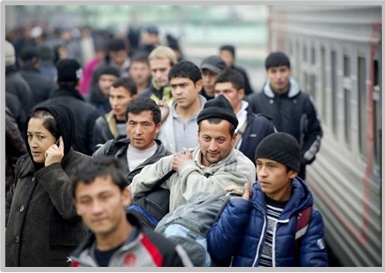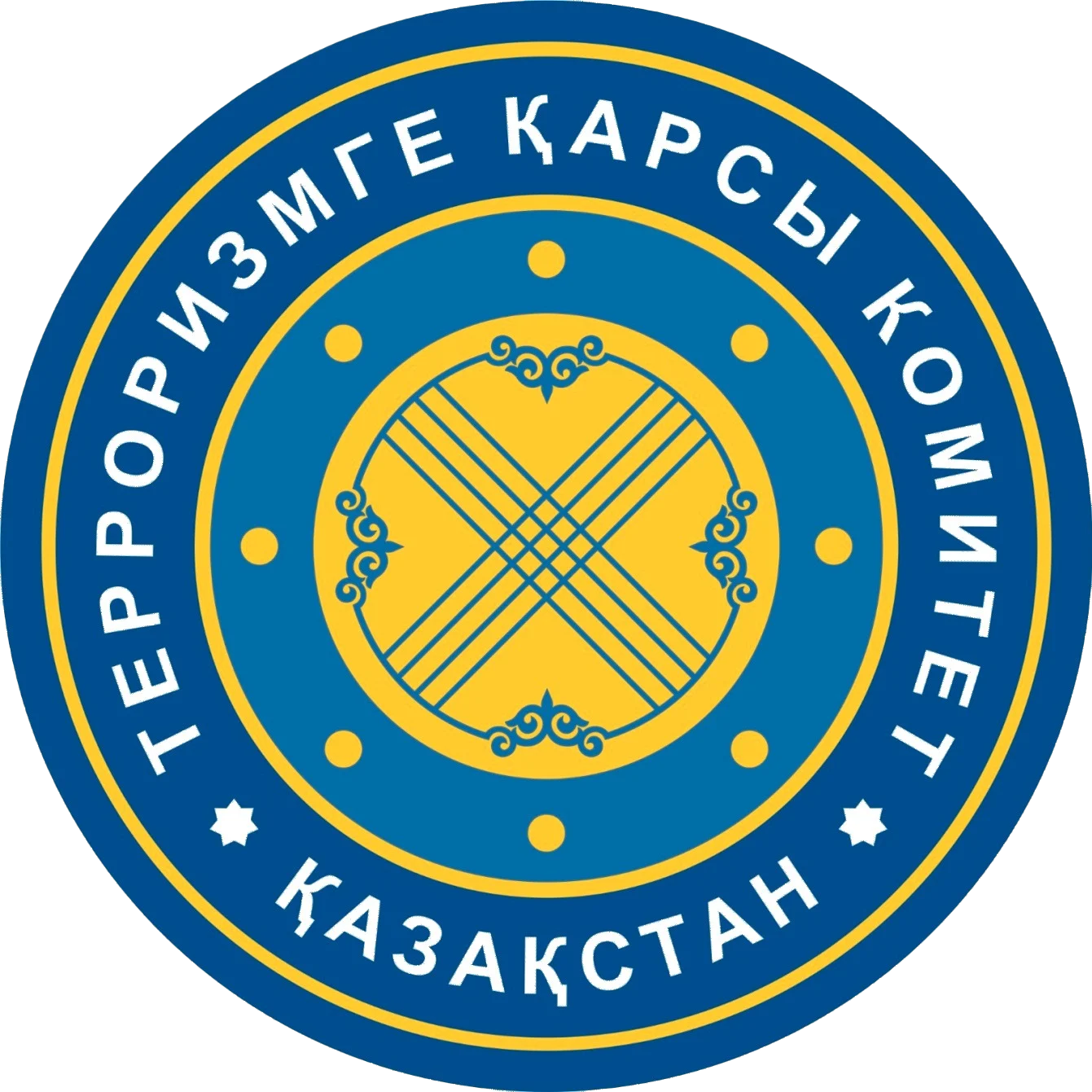By Dr Beruniy ALIMOV
People have been moving from place to place since time immemorial. While some move in search of better jobs, education, economic benefits or to reunite with their families, others are forced to flee conflict, terrorism or human rights violations. There is an increasing number of those who are being displaced as a result of the effects of climate change, natural disasters or other environmental factors.
In the modern world, we are witnessing the displacement of people on an unprecedented scale. More people than ever live in countries other than the ones they were born in.
According to the Population Division of the United Nations Department of Economic and Social Affairs, as of July 1, 2020, the number of international migrants in the world is estimated at 281 million people. International migrants make up about 3.5% of the world’s population, compared with 2.8% in 2000 and 2.3% in 1980.
Most people migrate of their own accord, others migrate out of necessity. Since various organizations and institutions collect migration data multiple organizations and institutions collect migration data, it is difficult to present a clear picture of migration.
Over the past 10 years, Uzbekistan has experienced significant domestic and international migration flows experienced significant domestic and international migration flows.
In 2022, the number of registered internal migrants in Uzbekistan amounted to 214,821 people, of whom 40% were men and 60% were women. Compared to 2018, internal migration flows increased by 34.1%. The main causes of internal migration include economic opportunities, improved living conditions and access to education in large cities (Displacement Tracking Matrix).

International migration from Uzbekistan also remains significant. The main destination for labour migration is Russia, where a great amount of Uzbeks leave in search of work. According to the International Organization for Migration (IOM), more than 1 million Uzbeks work abroad every year, mainly in Russia and Kazakhstan.
An important aspect of international migration is the participation of Uzbeks in the green card lottery to move to the United States. The opportunity to obtain permanent residence in the United States attracts many, as it (according to the survey) opens up prospects for improving the economic situation, obtaining high-quality education and legal protection. Participation in the green card lottery has become one of the most realistic chances for Uzbeks to improve their future. (https://dtm.iom.int/reports/uzbekistan-migration-situation-report-quarterly-compilation-jan-mar-2023).
If you look at how migration developed after the collapse of the Soviet Union, it can be noted that after the collapse of the USSR in 1991, migration processes in the territory of the former Soviet republics changed significantly, and the key aspects of migration development after the collapse of the USSR are considered:
- Emigration from the republics of the former USSR:
- In the early 1990s, many people left the former Soviet republics in search of better economic opportunities, political stability and security. The migration flow to Western Europe, North America and Israel was particularly significant.
- Many people of German and Jewish origin left Russia for Germany and Israel, respectively.
- Internal migration:
- Internal migration has increased, especially due to economic crises and conflicts in the former USSR. For example, many people moved from Central Asia to Russia in search of work and better living conditions.
- A large number of the Russian-speaking population migrated to Russia from former Soviet republics such as Kazakhstan, Uzbekistan, Tajikistan and others.
- Labour migration:
- Labour migration has become a key aspect of migration processes in the post-Soviet period. Russia has become the main destination for migrant workers from the CIS countries. Migrants were engaged in various types of low-skilled work, especially in construction and agriculture.
- The main donor countries for migrant workers include Uzbekistan, Tajikistan, Kyrgyzstan and Moldova.
In 1990-2000, it was a complex and multifaceted process associated with various political, economic and social changes. Immediately after the collapse of the USSR, a significant number of Russian–speaking citizens – Russians, Ukrainians, Belarusians and others – left Uzbekistan. Economic instability, ethnic conflicts and the rise of nationalist sentiments have forced many to emigrate to Russia, Ukraine and other CIS countries.
Speaking about migration in Uzbekistan in 1990-2000, it was a complex and multifaceted process associated with various political, economic and social changes. Immediately after the collapse of the USSR, a significant number of Russian–speaking citizens – Russians, Ukrainians, Belarusians and others – left Uzbekistan. Economic instability, ethnic conflicts and the rise of nationalist sentiments have forced many to emigrate to Russia, Ukraine and other CIS countries. The economic difficulties of the 1990s also contributed to the fact that a great deal of Uzbeks went abroad in search of work. Russia became the main destination for labour migration, and migrants from Uzbekistan engaged in low-skilled labour in construction, agriculture, trade and consumer services. Internal migration was driven by economic and social factors. Many people moved from rural areas to cities in search of work and better living conditions. The main destinations of this migration were Tashkent, Samarkand, Bukhara and other major cities. Political instability and ethnic conflicts have also played a role in migration processes. In the 1990s, some ethnic conflicts occurred in Uzbekistan, which led to the migration of the population. For example, the events in the Ferghana Valley in the late 1980s strained relations between Uzbeks and Meskhetian Turks (https://en.wikipedia.org/wiki/Meskhetian_Turks), which led to the departure of many from the region. A number of people also emigrated due to political instability and pressure on opposition forces. Environmental problems such as the drying up of the Aral Sea and related environmental disasters have also contributed to migration. People left the affected areas in search of more favourable living conditions. In addition, in the 1990s, there was a process of return of ethnic Uzbeks who had previously lived in other republics of the USSR, especially from Central Asian countries such as Tajikistan, where civil conflicts took place. These migration processes have had a significant impact on the demographic and socio-economic structure of Uzbekistan, forming modern trends and challenges in the field of migration.
Nevertheless, modern Uzbekistan remains a multinational country, despite the significant migration processes that have occurred in recent decades. This Central Asian republic, with its rich history and cultural heritage, is still home to representatives of many ethnic groups, each of which contributes to the unique cultural mosaic of the country.
Representatives of many nationalities continue to live and work in the country. Uzbeks, who make up the majority of the population, are surrounded by Tajiks, Kazakhs, Kyrgyz, Russians, Koreans, Tatars and many other peoples. This ethnic and cultural diversity persists today, despite all the changes that have occurred over the past decades.
At the State level, Uzbekistan actively supports the policy of interethnic peace and harmony. The country holds events aimed at strengthening interethnic relations and preventing ethnic conflicts. This contributes to maintaining stability and creating favorable conditions for different ethnic groups to live together.
The cultural ties between Uzbeks and Tajiks in Uzbekistan are a vivid example of centuries-old coexistence and interaction between the two peoples. The history of their interaction goes back many centuries. Important cities such as Samarkand and Bukhara were cultural and scientific centers where representatives of both peoples exchanged knowledge and cultural achievements. This exchange continues to have an impact on the modern culture of the region.
Uzbek and Tajik languages have common roots and mutually enrich each other. A significant number of Tajiks live in Uzbekistan, and in regions with a high concentration of Tajik population, such as the Samarkand and Surkhandarya regions, the Tajik language is widely used in everyday life. Many outstanding poets and writers, such as Alisher Navoi, created their masterpieces in both languages, and their works continue to be studied and appreciated, strengthening cultural ties between peoples.
Uzbek and Tajik cuisines have a lot in common and mutually enrich each other. Dishes such as pilaf, samsa, laghman and many others are prepared and enjoyed in both cultures. Joint holidays and family events often include traditional dishes that bring people together at a common table. The traditions and customs of Uzbeks and Tajiks are also similar and reflect a common cultural heritage. The celebration of Navruz is an important event for both peoples, symbolizing the beginning of the new year and the renewal of nature. Joint celebrations and participation in rituals contribute to strengthening mutual respect and understanding.
Today, Uzbeks and Tajiks continue to actively interact in various spheres of life. Cultural events, festivals and exhibitions are held in Uzbekistan, which emphasize cultural diversity and the interrelationship between peoples. Joint educational and scientific projects also contribute to the development of cultural ties. The Government of Uzbekistan actively supports initiatives aimed at strengthening interethnic relations and preserving the cultural heritage of Tajiks. Schools with teaching in the Tajik language are being opened, cultural centers are being created and events are being held to promote the preservation and development of Tajik culture in the country.
Thus, the cultural ties of Uzbeks and Tajiks within Uzbekistan are an important part of the national heritage and continue to play a key role in the formation of friendly and mutually respectful relations between peoples. These ties contribute to strengthening national unity and cultural diversity, which is an important factor in the sustainable development of the country.
But despite centuries-old cultural ties and a rich joint heritage, Tajiks and representatives of other nationalities have migrated and continue to migrate from Uzbekistan over the years for a number of reasons.
To begin with, after the collapse of the economy of the former Union countries faced serious difficulties. High unemployment, low wages and limited economic opportunities have forced many people, including Tajiks, to seek work outside the country. Migration to more economically developed countries such as Russia and Kazakhstan has become a way to improve the financial situation of their families. In the 1990s, the CIS countries experienced political and social instability. Changes in the political system, the transition from a socialist economy to a market economy, as well as ethnic conflicts and tensions in certain regions contributed to migration. People were leaving the country in search of a more stable and safe environment. But the high birth rate combined with limited economic opportunities created pressure on the labor market and social resources. Young people, especially in rural areas, often faced difficulties in finding work and a better life, which stimulated migration.
Government policy in the 90s and 2000s also influenced migration processes. At certain times, modernization and economic reform efforts have led to job cuts in the public sector and increased competition in the labor market. This forced people to look for work abroad.
In some cases, ethnic and cultural issues also played a role. Despite centuries of coexistence, periods of nationalism and ethnic tension could cause migration of certain groups of the population who were looking for more favorable conditions for their culture and language.
Let’s take as an example the impact of the Green Card lottery (U.S. DV) program on the migration process of Tajiks and other nationalities from Uzbekistan. Many participants believe that the opportunity to win a green card and obtain the right to permanent residence in the United States will open up many prospects for them. For many Uzbeks, including Tajiks, participation in the green card lottery has become one of the most realistic chances to improve their standard of living. By winning a lottery ticket in the United States, they hope for a better future for themselves and their families, and these hopes are driven by several key factors.
As the migrants tell us, “First of all, the prospects for economic stability play an important role. There are many job and career opportunities in the United States, which is especially important for those who have faced difficulties at home. High wages, a variety of jobs and favorable working conditions attract people who seek to ensure a decent existence for themselves and their families.
Educational opportunities are also an important factor. There are many prestigious universities and colleges in the USA offering high-quality education and broad prospects for professional development. For many Uzbeks, including Tajiks, winning the green card lottery means a chance to gain access to these educational resources and provide their children with a better future.”
Thus, despite the close ties between Uzbeks and Tajiks, migration from Uzbekistan has been and remains a multifaceted process driven by economic, social, political and demographic factors. Cultural ties between Uzbeks and Tajiks within Uzbekistan are an important part of the national heritage and continue to play a key role in the formation of friendly and mutually respectful relations between peoples. These ties contribute to strengthening national unity and cultural diversity.
Modern Uzbekistan, despite all the changes and challenges associated with migration, continues to develop as a multinational society. Ethnic diversity and cultural wealth remain important components of its national identity, contributing to the prosperity and sustainable development of the country.


